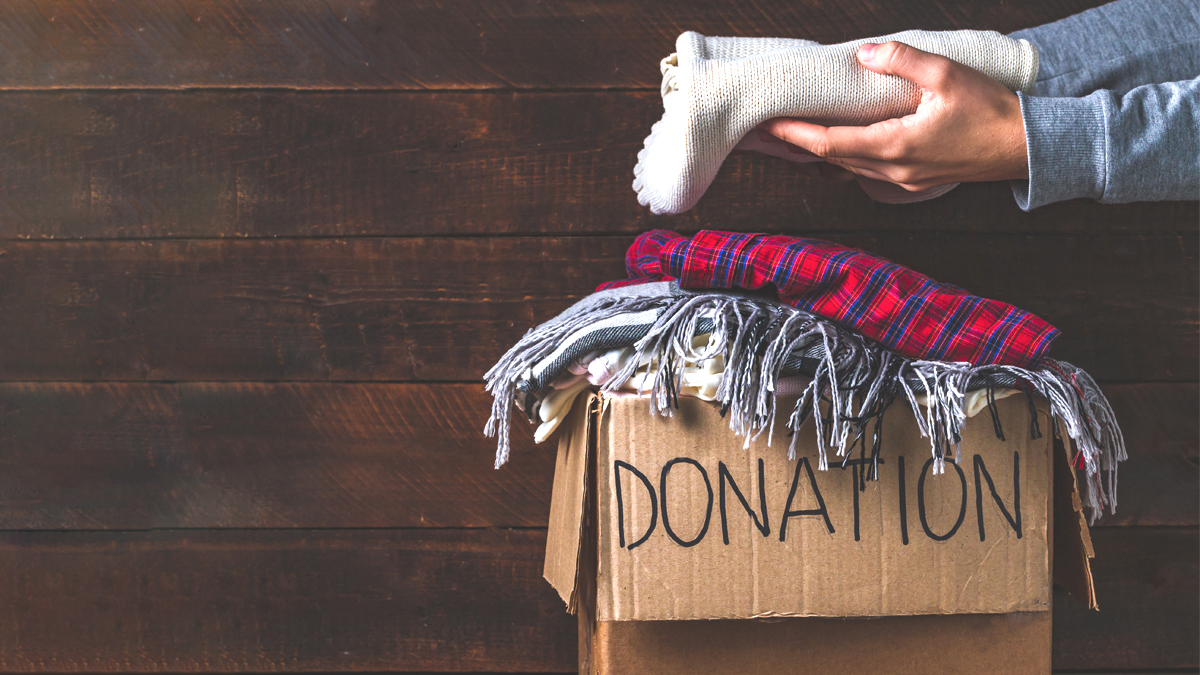‘Tis the season for donations, fundraising drives, and charitable giving. December is not only a month for holiday celebrations and get-togethers with family and friends, it’s also National Giving Month.
December is one of the most successful times for nonprofits and charities that rely on generous donations from strangers. Many people are reminded of all they have and all they have to give to others. In fact, according to NationalGivingMonth.org, “28% of nonprofits raise as much as 50% of their funding in December” with 12% of giving coming in the last three days of the year.
With the lingering pandemic, many Americans have had time to reflect on the importance of giving back to their communities and helping those less fortunate. Last year alone, Americans gave a record-breaking $410.2 billion to charity.
This momentum is certainly wonderful news for nonprofits and charities, and is inspiring for other individuals and small businesses who want to make a difference. But donations don’t just have to come in the form of money.
One particularly effective way to help your community is to create your own donation kits. Donation kits not only fulfill immediate needs of your most vulnerable neighbors, they also give you the added benefit of directly making an impact.
Unlike donating money to a cause you are passionate about, DIY donation kits you can distribute yourself, help provide an immediate difference to those who are home or food insecure.
Buying items wholesale with DollarDays allows you to reach the most amount of people while staying within your budget. We have everything you need to create a quality donation kit no matter where you live.
Kids Helping Kids
Creating your own donation kits is an excellent way to get kids involved in charitable giving and create a lifelong passion for helping others. Whether through a youth group, your school, or simply with a few neighborhood friends, host a donation kit party.
Kids helping kids can teach them powerful lessons about gratitude and humility. It also helps kids see the needs of others even within their own local communities.
Donate school supplies, food, or even small toys and games like Uno and cards. Forward backpacks are roomy and durable. Pack them with notebooks, pens, and folders. Or choose from several prepackaged school supply kits if you’re short on time.
Although there are several nationwide organizations that help kids with school supplies, these often don’t include helpful but non-essential items like calculators, specialty pens, or skill builders, and activity books. Donation kits filled with these items will help all kids feel just like everyone else.
For Families
The pandemic was (and still is) difficult on many families. The need for essentials like food and basic hygiene items continues to be high — especially for single parents and those with young children.
With 18.7% of white, non-Hispanic families with a single mother were living below the poverty level in the United States, donate baby clothes and other baby essentials. Blankets, wipes, and warm weather clothes are particularly useful. We also love these baby toys to keep kids entertained.
Non-perishable foods kids will actually eat is also perfect for donation kits. Try cereal, crackers, and trail mixes instead of non-nutritional sugary treats.
Consider making donations to hospitals, orphanages, or other youth centers. These places would welcome newborn baby kit donations. Pacifiers, grooming kits, and basic safety supplies are all needed.
For Homeless
The homeless have extensive needs. Travel-sized toiletries like deodorant, shampoo, and body wash purchased in bulk work well in DIY donation kits. You’ll still have room for other essentials like snacks, masks, and sunscreen.
If you live in a cold-weather area, be sure to remember items like gloves, socks, and scarves. These can make all the difference on cold nights. Fleece blankets also provide plenty of warmth and can be rolled up so as not to be too bulky in a donation kit. Instead of placing everything in a plastic bag, use a backpack they can continue using even after they run through the supplies.
Also, consider some basic first aid supplies like bandages and antibiotic ointment. These might not be everyday essentials but when the need arises, they can mean the difference between resting and a visit to the ER.
For the Elderly
Another group for whom you can prepare donation kits is the elderly. Even those who have a warm home, many elderly have limited mobility. When winter weather kicks in, they may need help getting grocery items, household goods, or hygiene products. Blankets and items for their medicine cabinets are also good ideas.
Donation kits for the elderly, in addition to a friendly visit, will definitely bring a smile to their faces and fill you with the warmth of this special holiday season.
Creating donation kits is a wonderful way to remember the true meaning of giving and receiving. You can choose to assemble and distribute your kits yourself or try working with a larger organization who might have more resources available to help.
Try reaching out to local schools, nonprofits, and even small businesses to see if they have any programs already in place. You could also visit the websites of national charities who might have more information about how to donate kits.
Source: https://www.digmaglb.com/blog/category/diy-care-packages-for-people-experiencing-homelessness

